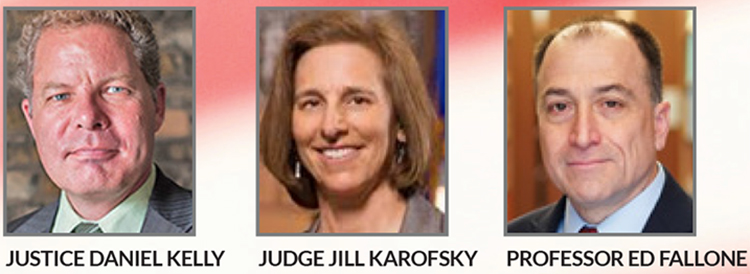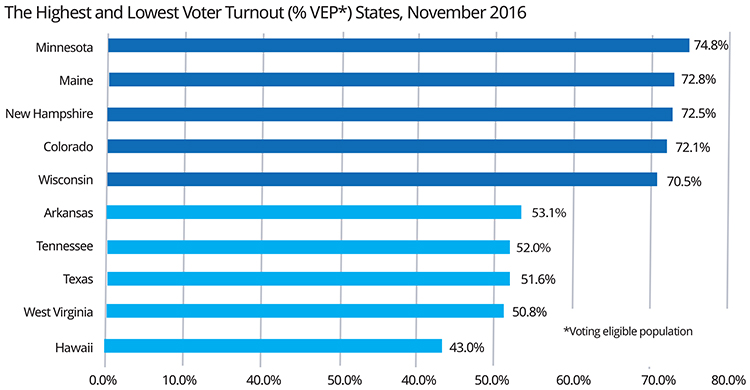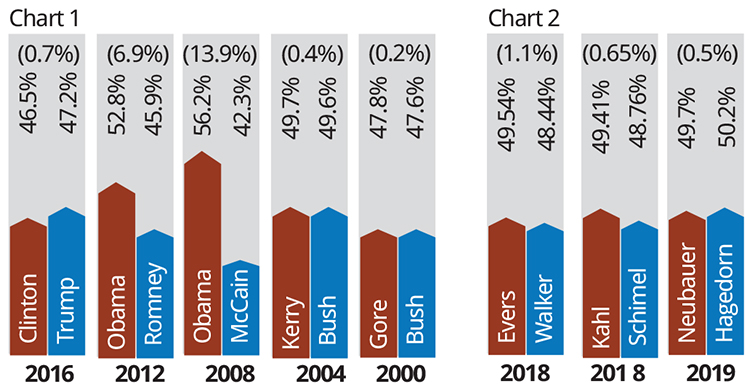With the presidential election less than one year away and Wisconsin positioned to be at center stage of the political universe in 2020, the level of campaign activity is significantly higher at this time than any recent presidential election cycle. Presidential candidates have visited Wisconsin several times; campaign fundraising is nonstop; and because Wisconsin is a top-five targeted state — some believe the top-tier state in the country — this activity will only intensify as we officially enter the 2020 election year.
“The general election has already started here,” according to Ben Winkler, the new chairman of the Wisconsin Democratic Party. Winkler says the state Democratic Party has a 17-person field staff in place, and canvassers have already knocked on hundreds of thousands of doors. Andrew Hitt, chairman of the Wisconsin Republican Party, says “it’s crazy, but almost everywhere I went I heard the same thing: We are working now like it’s the summer of 2020, not the summer of 2019.”
Given the incredible amount of activity and money that will be spent in Wisconsin, these are four key developments to watch as we get closer to the November 4, 2020, presidential election.

1. Wisconsin Supreme Court race
For the sixth consecutive year in a row, Wisconsin voters will elect a justice to the state Supreme Court for a 10-year term. There are three candidates in this race heading into the February 18 primary election: incumbent Justice Daniel Kelly, appointed to the court in 2016 by former Gov. Scott Walker; Dane County Circuit Court Judge Jill Karofsky; and Marquette University Law School Professor Ed Fallone.
The 2020 race for state Supreme Court will very likely continue to pit a conservative candidate against a liberal candidate. Incumbent Justice Daniel Kelly, a conservative and longtime member of the Federalist Society, is the only conservative in the race, and he should breeze through the February 18 primary election. He will then face the winner of the Karofsky-Fallone primary in the April 7 spring election.
Although State Supreme Court elections are officially nonpartisan, liberals and conservatives typically unite behind their philosophical choices. Kelly will be supported by conservatives and Karofsky or Fallone by liberals.
One of the most significant factors in this race is the matter of timing. The state Supreme Court election will be held the same day as Wisconsin’s presidential preference primary in April. This could provide the liberal candidate with the edge if several Democratic presidential candidates are still battling for the nomination in the April 7 spring election. President Trump is not expected to have significant opposition, which means Wisconsin is likely to see higher voter turnout on the Democratic side, which will benefit the liberal Supreme Court candidate. But conservatives and their allies will not be writing off this race. After their surprising win in the April 2019 contest between Brian Hagedorn and Lisa Neubauer, conservatives will work hard to turn out their base with newfound confidence from their win with Hagedorn.
2. Wisconsin as the top 2020 battleground
In the eyes of many political analysts, Wisconsin is the number one battleground state in next year’s presidential election. Why? In large part because Wisconsin, along with Michigan and Pennsylvania, was one of three traditionally blue states that Donald Trump flipped to red, giving Trump his electoral college victory in 2016. Republicans at the national level believe Wisconsin will be the most likely to vote Trump again of the three states in 2020.
A closer look at presidential elections in Wisconsin since 2000 would strongly suggest these analysts are right. In the five most recent presidential elections, three of the five were virtually even and two were comfortable wins for the Democrats and former President Barack Obama. See chart 1.
In addition to presidential elections, think about how close these recent statewide elections turned out. See chart 2.
Wisconsin has a long history of close statewide elections, and the 2020 presidential election could easily be another late night for political junkies who are glued to their television waiting for final results.

3. Sky-high turnout in 2020
In addition to highly competitive statewide election results, Wisconsin voters have a long-held tradition of turning out to vote in statistically huge numbers. Wisconsin is often near the top compared to most other states, and political experts believe all the factors are present to generate historically high voter turnout in 2020. According to political reporter Craig Gilbert of the Milwaukee Journal Sentinel, there are three primary factors that could easily drive Wisconsin voter turnout to an all-time high next year:
-
2018 midterm turnout: “In Wisconsin, almost 62% of eligible voters went to the polls last fall, a level rarely reached by any state in a modern-day mid-term election — and higher than the nationwide turnout for president in 2016."
-
Measured enthusiasm: “In polling by the Marquette Law School this year, about two-thirds of voters say they follow what’s going on in politics ‘most of the time.’ That number has never been higher in a non-election year in Marquette’s seven-plus years of Wisconsin polling."
-
Top-tier state: “Wisconsin status as a top-five electoral target, resulting in a ‘non-stop relentless presence’ by the candidates, their running mates, and their high-profile surrogates, along with saturation TV advertising and well-funded get-out-the-vote efforts.”
Wisconsin’s status as a swing state with historically close elections does, in fact, generate some of the highest turnout in the country, and the 2020 presidential race could easily surpass all previous records.

4. The impeachment process
The November 2019 Marquette Law School poll asked, “Do you think that Donald Trump should be impeached and removed from office or don’t you think so?” Among the results, 40 percent of respondents said Trump should be removed, and 53 percent said he should not be impeached and removed. But the response from independent voters received very little attention: Only 36 percent support removal, while 47 percent do not favor removal at this time. As the impeachment process continues to play out over the next few months, it will be interesting to see if independent voters change their minds. Independent voters are very important in a swing state like Wisconsin. In fact, they often decide the winner in close and competitive elections.
There is never a dull moment in Badger State politics. Stay tuned!
Joe Murray is Director of Political and Governmental Affairs for the WRA.